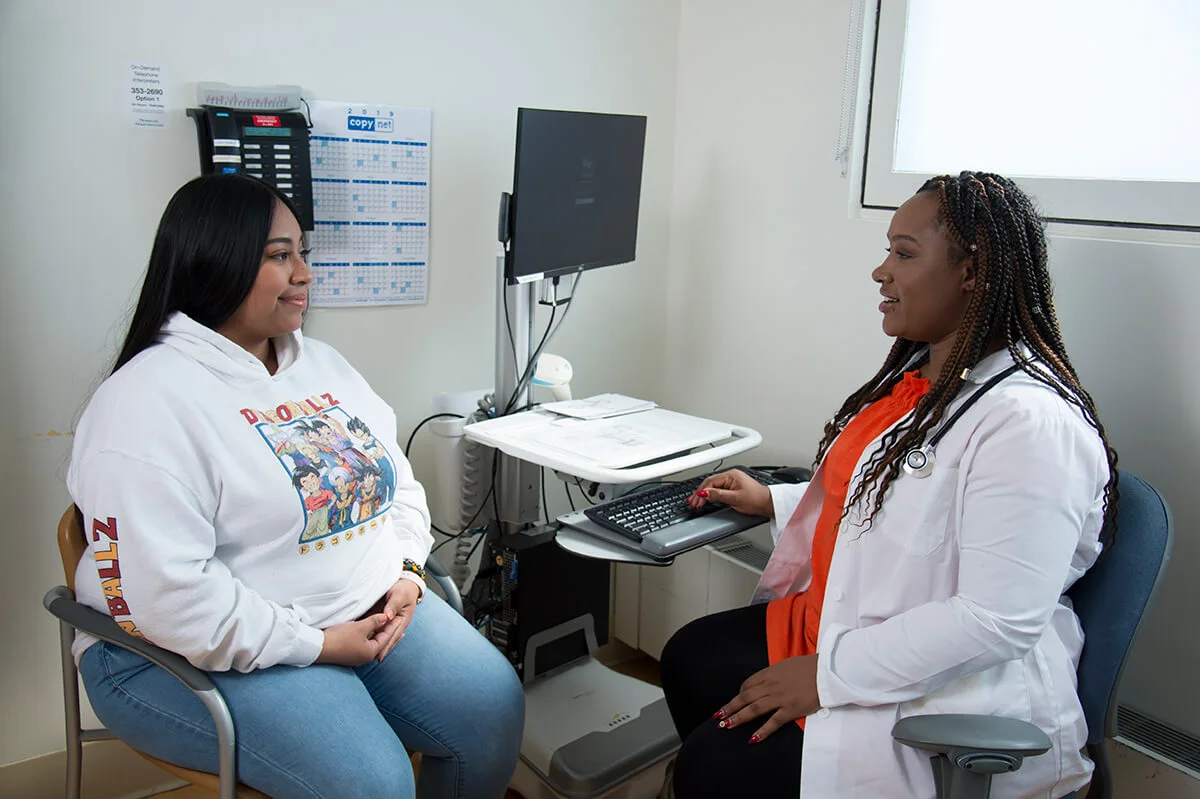PUTTING ACCESS
INTO PRACTICE
MEDICAL ABORTION ON YOUR TERMS
Home > GenBioPro Products > Mifepristone > Patient >
Medical Abortion
Medical abortion involves taking two FDA-approved pills - mifepristone followed by misoprostol. Generic mifepristone tablets, 200 mg, from GenBioPro were approved by the FDA in 2019. The FDA carefully reviewed the medication and found that generic mifepristone tablets, 200 mg, from GenBioPro are equivalent to brand-name mifepristone.
Medical abortion has been used safely and effectively by over five million people in the US since 2000. GenBioPro generics for medical abortion may be used up to 70 days from the first day of the last menstrual period. Medical abortion is now the most common way to end an early pregnancy.
- Effective: 97% successful overall.
- Non-Invasive: Abortion pill taken orally, instead of a procedure in a clinic or hospital.
New for You: Increased Access and Flexibility
Today there are more ways for you to get the abortion care you need, including medical abortion with mifepristone.
In 2023, the US Food and Drug Administration (FDA) made changes to how GenBioPro mifepristone tablets, 200 mg, for medical abortion can be prescribed and dispensed:
- Telemedicine Care
In addition to in-person care, now telemedicine care is available in states where it is permitted. This gives you the flexibility to see your health care provider in person or remotely.
- More Ways to Get Your Prescription
Certified prescribers can now choose how to dispense GenBioPro mifepristone tablets, 200 mg - directly to you or by sending a prescription to a certified pharmacy to be filled. Depending on the way your health care provider works, you may be able to receive a 200 mg GenBioPro generic mifepristone tablet in person, pick up your prescription in a pharmacy, or a pharmacy may mail it to you. More options for you!
You can rely on GenBioPro for high-quality, accessible medical abortion products.
Seeking Abortion Care?
Talk to your health care provider to see if medical abortion with mifepristone with misoprostol may be right for you.

We Support Your Pregnancy Decision
At GenBioPro, we believe that you are the expert on your own life. You are the only one with enough information to determine your future and make personal health care decisions best for you and your family. If you choose to end your pregnancy, there may be several types of abortion care available to you. Medical abortion is one of the most commonly used methods for ending an early pregnancy.
How Do I Get a Medical Abortion?
It starts with a visit to a health care provider - in person or by telemedicine, if permitted in the state where you seek care. Generic mifepristone tablets, 200 mg, are available by prescription from health care providers who have become GenBioPro Prescribers. A 200 mg GenBioPro mifepristone tablet may be given to you by your health care provider or you can fill a prescription for it with a certified pharmacy. Some certified pharmacies send GenBioPro medications by mail and some offer in-store pick up. Neither GenBioPro mifepristone tablets, 200 mg, nor misoprostol, 200 mcg, are available over the counter.
Ask your trusted health care provider or find an abortion care service near you:
Planned Parenthood health centers
Call 1-800-230-PLAN
National Abortion Federation (NAF) member clinics
Call 1-800-772-9100
Abortion Care Network (ACN) member clinics
Call 1-202-419-1444
Abortion Clinics Online (ACOL) listings
Call 1-800-455-8130
I Need an A
Abortion Finder


Medical Abortion Has a Long History
Mifepristone, also known as the abortion pill or RU-486, was developed in 1980 and came into use in France in 1988. Since then, it has been used in combination with misoprostol widely in Europe, and has been used safely and effectively in the US for more than 20 years.
Medical Abortion Is Common
Although many people do not talk about having an abortion, it is a very common experience. By age 45, about half of US women will have an unintended pregnancy and one in four will have an abortion. Every year in the US, more than 600,000 people end a pregnancy through medical abortion. As of 2022, over five million people in the US had used mifepristone and misoprostol for medical abortion.
Medical Abortion Safety
The FDA has thoroughly evaluated medical abortion and confirmed that it is reliable and effective. Serious complications of medical abortion are rare, happening for about 3 out of 1,000 people. Unfortunately, misinformation about medical abortion has created some confusion and concern. However, it is important to remember serious risks do exist. See below for additional information about these risks, read the Medication Guide and discuss with your health care provider. In addition to providing generic medical abortion products, GenBioPro is committed to educating everyone about medical abortion's safety and effectiveness.

Medical Abortion Is Effective
Mifepristone, when used in combination with misoprostol, is very effective in ending early pregnancy. It is successful in 97% of cases overall. That is the average of a 93-98% range in success rate, which depends on how far along the pregnancy is. Earlier termination, by 49 days of pregnancy, has the highest rate of success: 98%. Later termination, near 70 days of pregnancy, has the lowest rate of success: 93%. A small percentage of people who take mifepristone - 2-7% - will need a follow-up aspiration procedure to end their pregnancy or to stop too much bleeding.
Your health care provider will check to make sure that your pregnancy has ended at 7 to 14 days after taking mifepristone and misoprostol. If you are still pregnant, or have a problem with bleeding, you will talk about next steps together.
